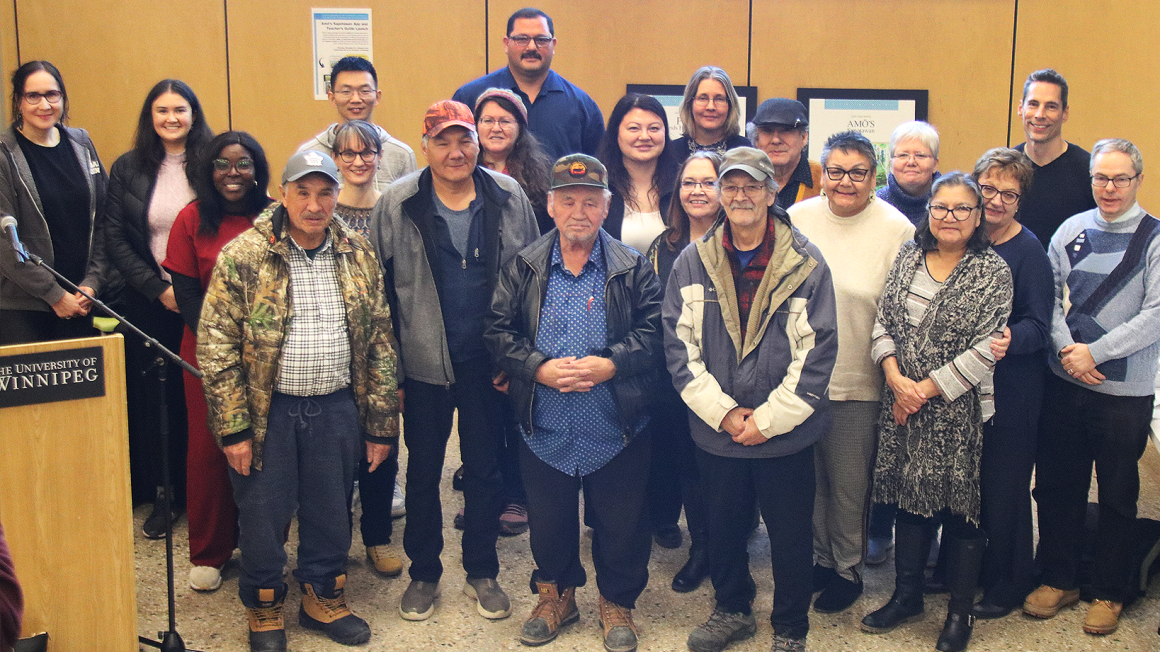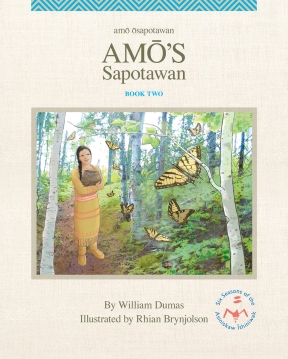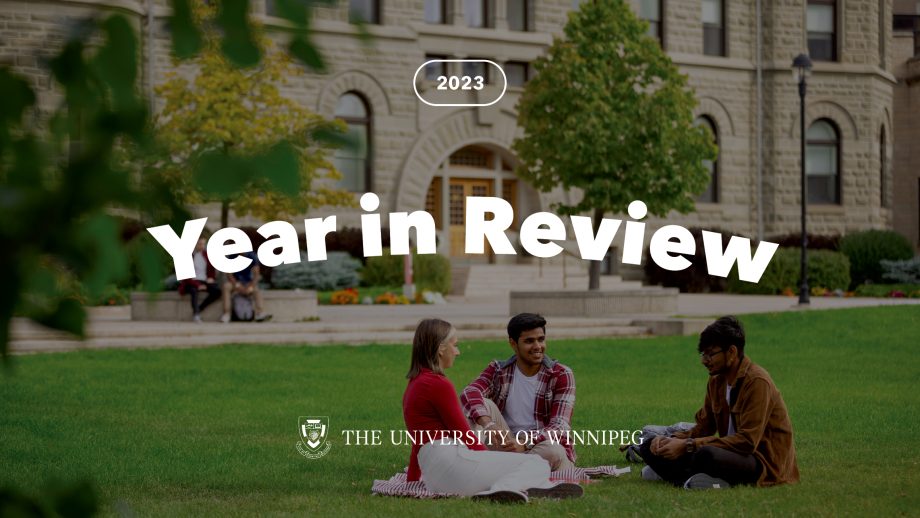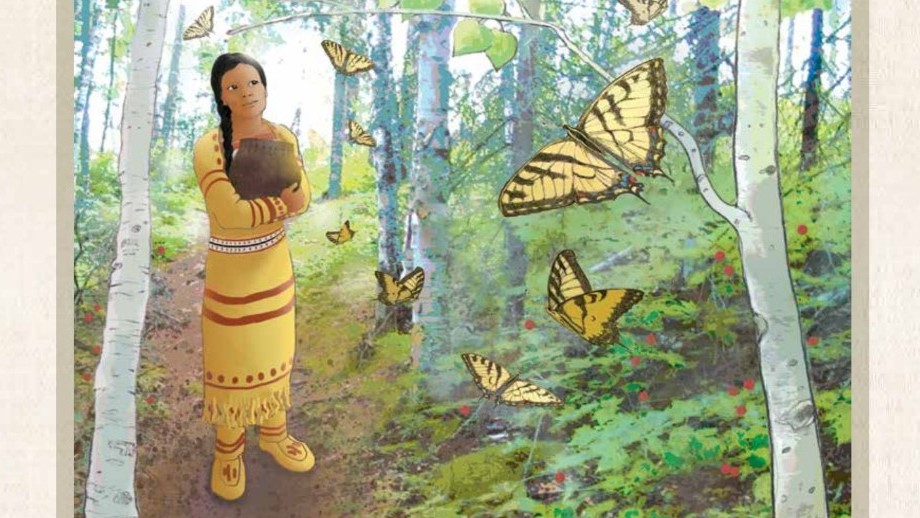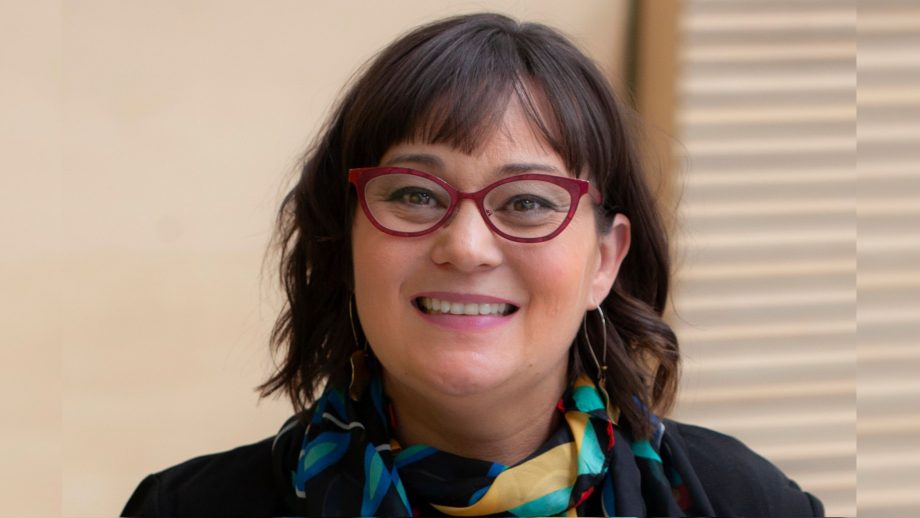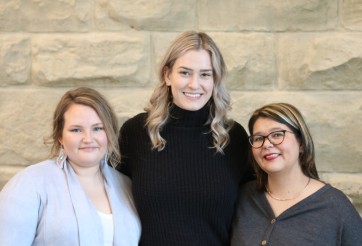Knowledge Keepers, academics, community researchers, and students filled Leatherdale Hall on November 23 to celebrate the launch of an interactive app and teacher’s guide based on the picture book Amō’s Sapotawan, written by Rocky Cree storyteller William Dumas and illustrated by Rhian Brynjolson.
Amō’s Sapotawan is the second book of The Six Seasons of the Asiniskaw Īthiniwak (Rocky Cree) language revitalization project. The impetus for the Six Seasons project was the 1993 discovery of the remains of a 25-year-old Cree woman who lived 350 years ago in northern Manitoba.
Collaboration is at the heart of the Six Seasons project, explained Six Seasons Project Director Dr. Mavis Reimer.
The Six Seasons picture books, apps, and teacher’s guides are designed to help reconnect contemporary and future Asiniskaw Īthiniwak to their history, language, and culture.
dr. Mavis Reimer
“As described by the Knowledge Keepers on the project, collaboration means walking this path together side by side,” Dr. Reimer said. “The practice of collaboration really shapes all aspects of our project: the research and creation of picture books, apps, and teacher’s guides.”
The book’s main character, Amō, is the younger sister of Pīsim, the main character of the first book in the series, Pīsim Finds Her Miskanaw. Set in nīpin (summer), Amō’s Sapotawan weaves a wealth of cultural details shared by Rocky Cree Knowledge Keepers and her Rocky Cree community into “story notes” surrounding the text, which is brought to life in the interactive new app, called AMO.
This includes Rocky Cree and English voiced narrations of the book, as well as text in English, Cree, and syllabics. There are also songs, curated soundscapes, and pop-up notes that add cultural, linguistic, and historical context to the story, plus participatory games that encourage participation in, and reflection on, Rocky Cree culture. AMO is available for free download in the Android and Apple app stores.
Supporting cultural revitalization
The Six Seasons project supports the grassroots work of cultural revitalization that the Asiniskaw Īthiniwak (Rocky Cree) started many years ago. One major benefit of the project is the connections it creates and fosters: between project participants, between academics and asiniskaw īthiniwak communities, and between researchers and the land.
“Most importantly, however, the Six Seasons picture books, apps, and teacher’s guides are designed to help reconnect contemporary and future Asiniskaw Īthiniwak to their history, language, and culture,” said Dr. Reimer.
The Teacher’s Guide is intended to support educators using Amō’s Sapotawan and the AMO app in the classroom. It presents four thematic modules that include teaching strategies with suggested connections to Manitoba middle-years curricula in Social Studies, Science, English Language Arts, Health, and the Arts, as well as Rocky Cree culture and language.
The Six Seasons of the Asiniskaw Īthiniwak collaborative research group celebrated the launch of the first picture book Pisim Finds Her Miskanaw, by Dumas and illustrated by Leonard Paul, also includes an interactive app and Teacher’s guide in the Six Seasons series.
About the Six Seasons of the Asiniskaw Īthiniwak
The overall goal of this SSHRC (Social Sciences and Humanities Research Council of Canada) Partnership project is to advance the ongoing work of reclaiming Indigenous languages, histories, and knowledges among the Asiniskaw Īthiniwak (Rocky Cree), work that is taking place in the context of Truth and Reconciliation Commission of Canada’s 94 Calls to Action (2015), which call for the revitalization of Indigenous cultures, the “relearning of Canada’s national history,” and the reconciliation between Indigenous and non-Indigenous people.

